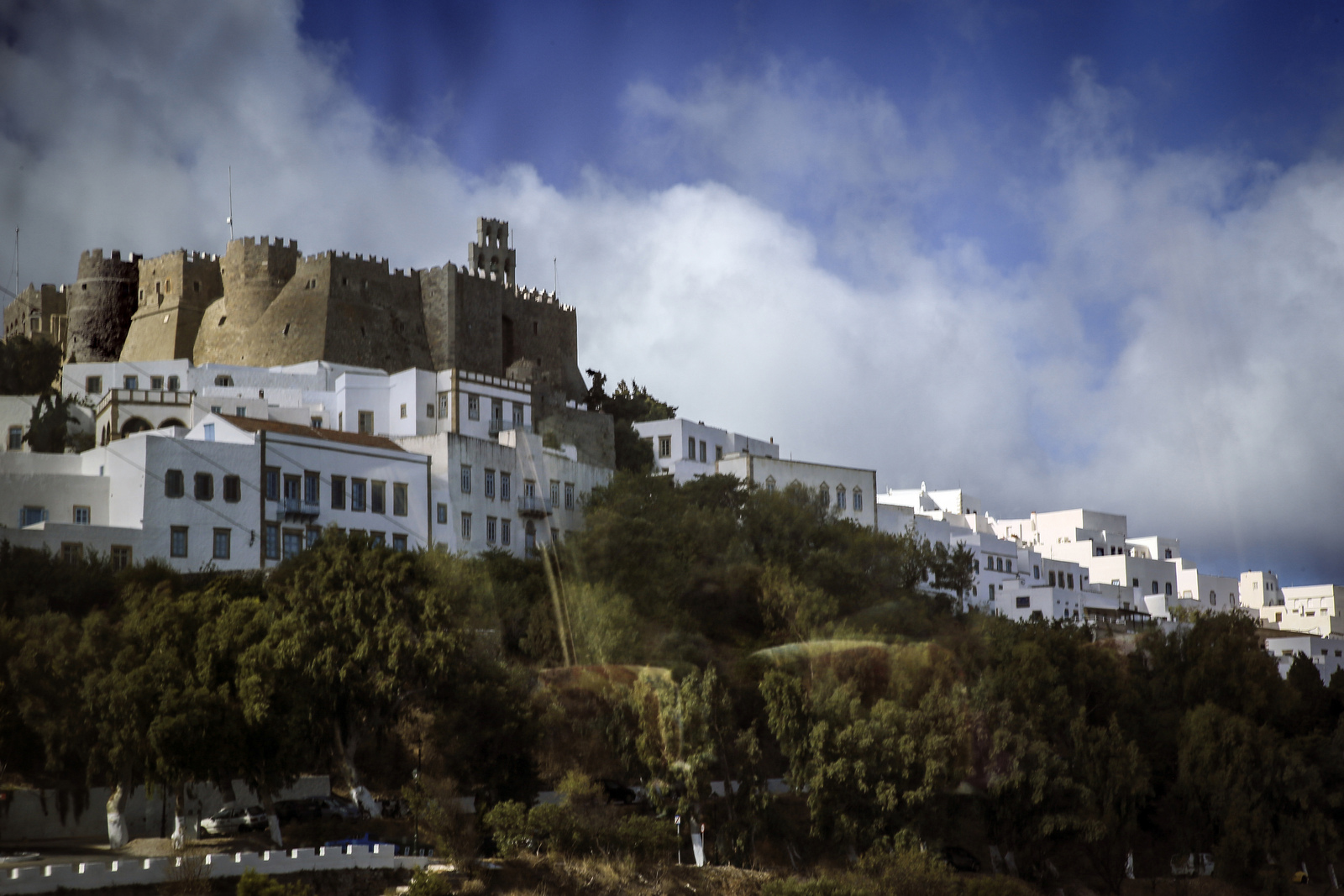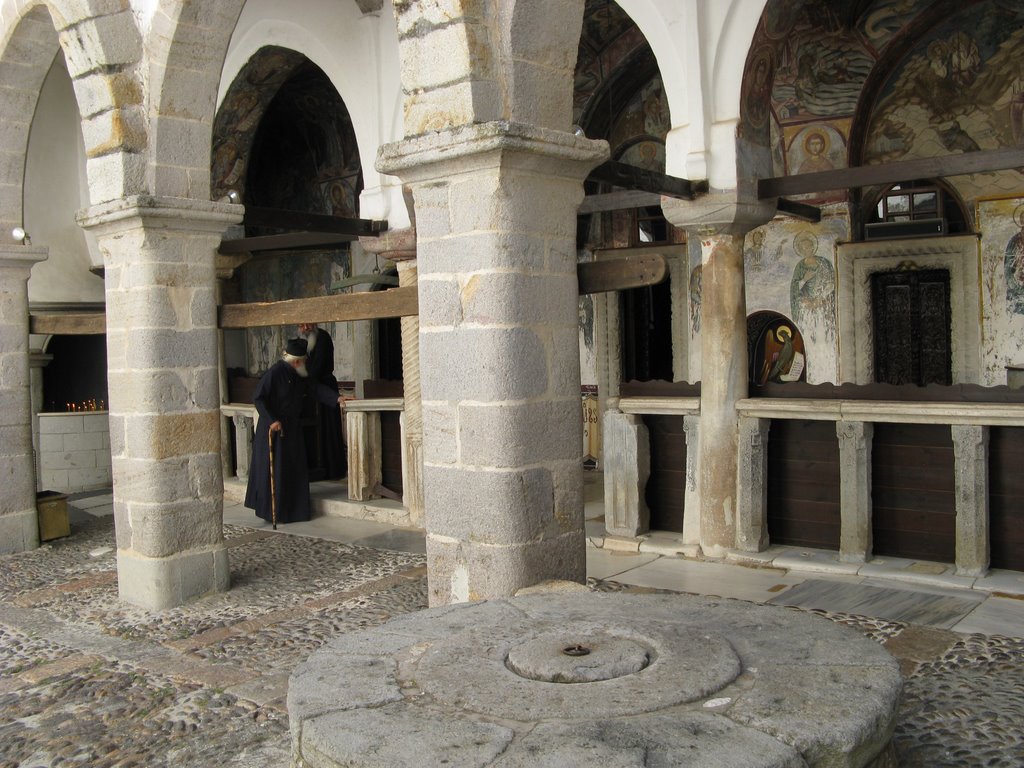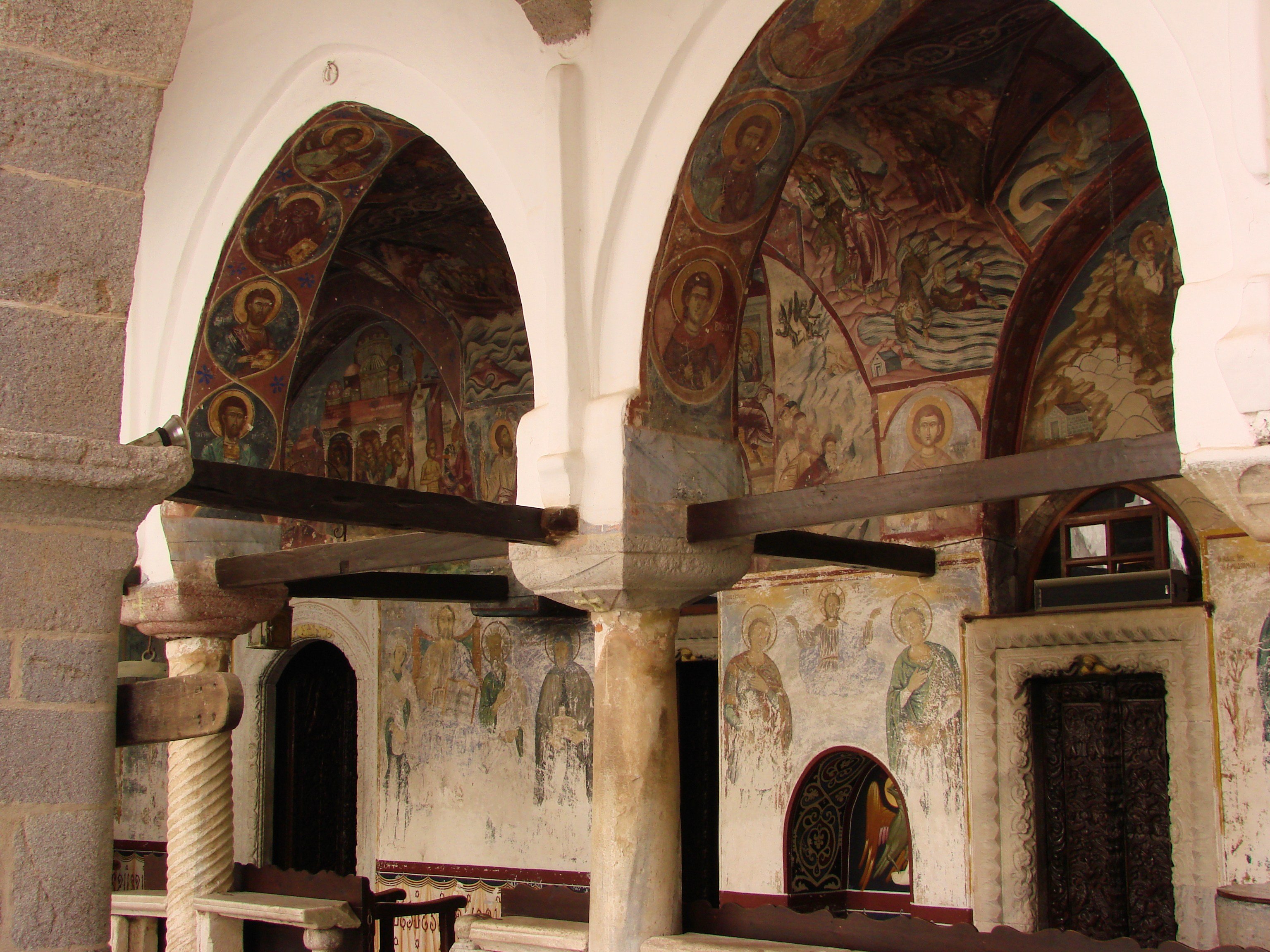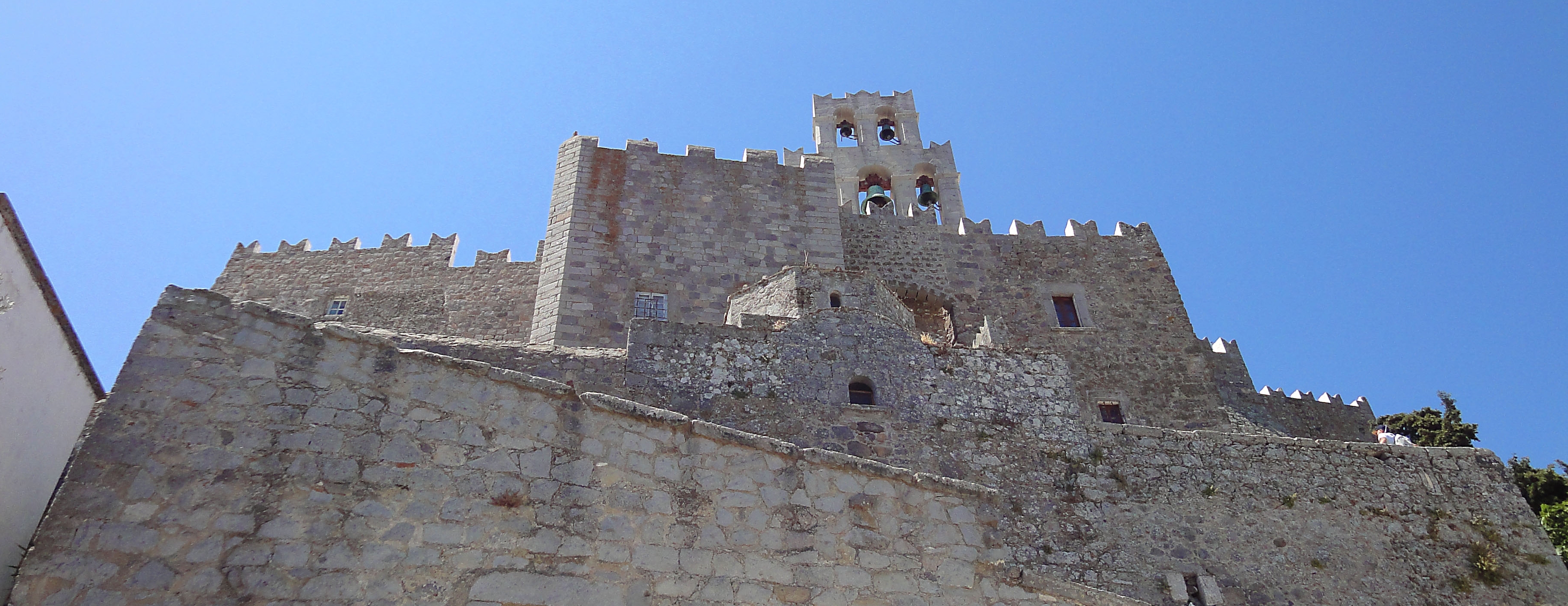The monastery was founded in 1088 by Christodoulos Latrinos, one of the most important figures of Byzantine asceticism. It is an important center of worship for more than 900 years. In the interior there are priceless treasures and relics.
The first buildings (1088-1093) were the Katholikon, the cistern (tank), some cells and a large part of the walls. In the 12th century the chapels of Our Lady and Saint Christodoulos were built. In the 16th century new and important buildings were constructed: the Chapel of the Holy Cross, the Chapel of the Apostles, the Chapel of St. Basil and the sacristy next to the church. In the last decade of the 17th century a large building project (named after the Metropolitan of Karpathos, Grimanis Neophytos) took place and the monastery acquired the appearance it has nowadays. The central courtyard was reformed and the walls were reinforced. Furthermore, between 1550 and 1700 the woodwork of Cretan artists and valuable paintings were placed in the Katholikon.
The earthquake of 1956 caused significant damage to the walls and the interior of the monastery. In1957-1964 the Ephorate of Antiquities of the Dodecanese in collaboration with the Ministry of Education funded a program in order to restore the monastery. They also built a large four-storey building that housed the sacristy, the library and the museum.
The wall
The wall around the monastery has a polygonal shape and it is 15 meters high. The main entrance (in the north) consists of two rectangular towers connected by a wall. On the top there is the "killer", a huge bowl which contained boiling oil or water and which they threw on the attackers.
The Katholikon
It is built on the spot where there used to be the temple of Artemis and later on an early Christian basilica dedicated to Theologian. Here you will also see the chapels of the Virgin, the Angels and St. Christodoulos. The iconostasis of the 19th century is made by craftsmen from Chios. The images of the iconostasis are of Russian style and tradition and were donated by Catherine the Great. The silver hanging oil lamps are Venetian (17th century). One of the most significant paintings depicts St. John the Theologian, and it dates back to 1090. The painting was a gift to Saint Christodoulos by Alexios A’ Komninos.
High Altar
Of particular interest is the High Altar of the monastery, but it is not open for visits. It is the only monastery altar with a dome. There are frescoes that date back to 12th century and they were revealed in the earthquake of 1956.
The library
The site was inaugurated in 1988, nine hundred years after the foundation of the monastery. The central hall has stone columns and plaster vaults, while the walls are covered by many wooden bookshelves. The main room of the library was created almost simultaneously with the foundation of the monastery in 1088. It housed manuscripts that Christodoulos had collected and the imperial documents that ensured the ownership of the building. Until the early 13th century, the library housed theological books while in the mid-14th century the collection was enriched with historical, literary and philosophical works.
In the 15th century more books were transferred here in order to be protected from the Turks. With the establishment of the School of Patmos in the 18th century the collection grew bigger with a series of publications and manuscripts, mainly of theological content. Moreover, it seems that there was a copying workshop in the monastery. Today, it is one of the most important monastic libraries in the world. It includes 1,200 manuscripts, more than 13,000 documents and over 4,500 archetypes and manuscripts.
The documents archive is comprised of Byzantine, post-Byzantine, Turkish, Latin, and Russian imperial and patriarchal documents. It constitutes an important source of information for the wider region of the Aegean.
The entrance to the library is allowed only with special authorization.






